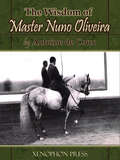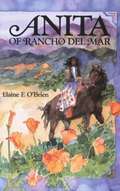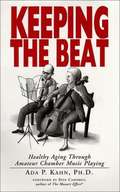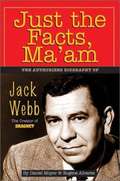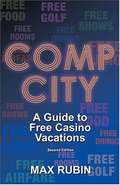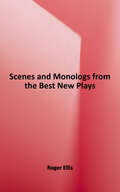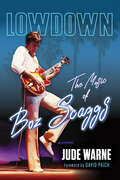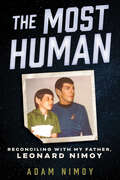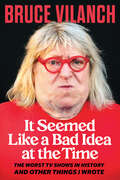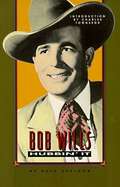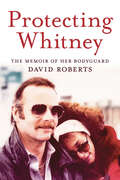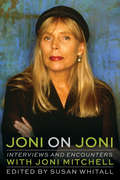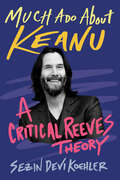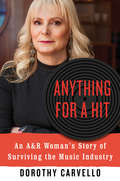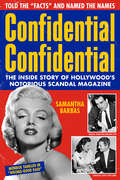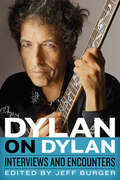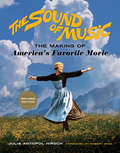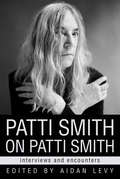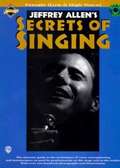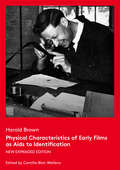- Table View
- List View
The Wisdom of Master Nuno Oliveira
by Antoine De CouxThis is the only English translation of 'Paroles du Maitre' by Antoine de Coux Antoine de Coux, a magistrate in the Belgian Congo, was undoubtedly one of the most loyal students of Master Nuno Oliveira. From 1966, when they met and became close friends, until Oliveira's death in 1989, Antoine de Coux participated in the annual two-month training sessions that Nuno Oliveira held in Belgium. De Coux was a fine rider, watched every lesson and took copious notes, filling more than forty notebooks. He faithfully recorded the teachings and remarks of the When Nuno Oliveira passed, Antoine de Coux decided to organize this great "memoir of a life experience," so that all riders could benefit from this knowledge. Nuno Oliveira was an exceptionally talented educator, gladly repeating his concepts with different descriptions to suit the level of understanding of his wide range of students. Antoine de Coux did not live long enough to realize the completion of his work. Madame Suzanne Laurenty, who also followed Oliveira's courses, finished the editing project resulting in this seminal book. Concepts and quotations are organized and punctuated to be faithful to the Master's teaching. This collection of words of advice constitutes the Wisdom of Master Nuno Oliveira, and we trust the reader will find it valuable and practical. This book presents a coherent, rich and outstanding contribution to the equestrian literature and extends Nuno Oliveira's legacy in an extraordinarily life-like manner. This one and only English edition is further enhanced by the expert translation of native Frenchman Jean Philippe Giacomini. A friend of Antoine de Coux and fellow student of Nuno Oliveira, he possesses first hand knowledge of the Master's teaching and is an equestrian scholar and a remarkable dressage trainer.
Don't Sit Under the Grits Tree with Anyone Else But Me
by Lewis GrizzardMore down-home humor from Lewis Grizzard. Ruminations on lardbutts. bra-padders. Good ol'boys and giggling Yankee girls. The joys of white bread and knowing your way around a 1957 Chevrolet. And lots more from one of America's favorite writers. Other books by Lewis Grizzard are available in this library.
Kathy Sue Loudermilk, I Love You
by Lewis Grizzard"So this is what's happened to the South since William Faulkner left! Lewis Grizzard, a great American, gives us the best collection of stories about a mother's love, old folks, railroad trains, going home, and the No-Name Bar in Willacoochee, Georgia." --The Chicago Sun-Times Who is Lewis Grizzard? A Southern humorist who can make you laugh one minute and weep the next. In these columns, he celebrates America, the South, old folks and much more. Other books by this author are available in this library.
Anita of Rancho Del Mar
by Elaine F. O'BrienDepicts life on a Spanish land-grant ranch in California in the 1830s through the adventures of young Anita and the Lorenzana family.
Keeping the Beat: Healthy Aging Through Amateur Chamber Music Playing
by Ada P. KahnDust off your clarinet! You can express yourself and improve your health through music. Ada Kahn's Keeping the Beat encourages older amateur musicians who play violins, cellos, flutes, and recorders to make joyful sounds with others.
Just the Facts, Ma'am: The Authorized Biography of Jack Webb
by Daniel Moyer Eugene AlvarezFrom his poverty-stricken childhood to his success on TV, this is the story of the creator and portrayer of Dragnet's Joe Friday.
Comp City, A guide to Free Las Vegas Vacations
by Max RubinWin every time you gamble? Is that possible? It is if you play for comps. Every year, U.S. casinos give away more than a billion dollars worth of amenities to customers in return for their gambling action. These giveaways, known as "comps" (short for complimentaries), range from parking and drinks to gourmet meals and airfare. Are you getting your share? From nickel slot players to $500 a hand blackjack high rollers, Comp City has shown tens of thousands of gamblers how to get free casino vacations.
On Fear of Flying
by Lewis GrizzardGrizzard is a lover of trains, but he has to fly (if he wants to keep his job, which he does, of course, because Catfish, his black lab, is always hungry.) And, it isn't the flying that is the problem--it is the crashing!
The Quarter Note Cowpoke
by James Potter Gale Potter"His parents were puffed up, near bursting with pride. However, their dreams and his dreams did not coincide."
Scenes and Monologs from the Best New Plays: An Anthology of New Dramatic Writing from Professionally Produced American Plays
by Roger EllisThis book is a practical resource for acting and directing students of all ages middle through high school, college, and professionals young and old. Its 30 duet scenes and eight monologues include a fair sampling of the late 20th-century work of playwrights across the United States. These excerpts are highly original in that few people can claim to have read or seen them performed, though they have all been produced regionally. The gallery of characters contained in these pages offers readers an arresting and kaleidoscopic reflection of American society. The literary styles one encounters here demonstrate the range and power of American writers who will continue to shape theatrical techniques for years to come. Overall, this anthology provides a generous sampling of vital and compelling treatments of our social, artistic, and spiritual experiences of the late 20th century.
Lowdown: The Music of Boz Scaggs
by Jude Warne David PaichBoz Scaggs has always been a musical artist of complexity. Boz Scaggs founded his connection to music through the blues, but his lasting legacy is one of glamorous and romantic pop songwriting. He possessed a somewhat shy and sensitive demeanor never totally at home in the public eye, yet his claim to several chart-topping singles and albums, particularly the millions-selling and critically acclaimed Silk Degrees (1976), demanded constant exposure. The persona he expressed through his music was laid back, effortlessly cool, sophisticated, stylish, romantically charming, and suave. But the immense success he achieved in his career pointed in part to the driven and determined artist within. Lowdown: The Music of Boz Scaggs examines the uniqueness of these contradictions and Boz Scaggs's sixty-plus-year career and his rich and diverse musical catalogue. Over the decades, Scaggs collaborated with an array of talented heavies, from the Steve Miller Band to the Muscle Shoals Rhythm Section (which included a young Duane Allman) on Boz Scaggs (1969), from the session players on Silk Degrees (1976) who would form the hit band Toto to Donald Fagen and Michael McDonald on the Dukes of September's 2010 Rhythm Revue tour.This first-ever book on Boz is constructed around intensely thorough analysis of his complete discography, and new and exclusive in-depth interviews with a selection of Scaggs's associated colleagues from his vast career.
The Most Human: Reconciling with My Father, Leonard Nimoy
by Adam Nimoy"Adam Nimoy has written about the challenges growing up with his famous father and about their estrangement later in life. The fact that Leonard and Adam found a way to rebuild their relationship should resonate with anyone who struggles with difficult family dynamics."—George Takei"Engaging and immensely relatable, while at the same time offering deeply profound insights into Adam Nimoy's personal relationships, particularly with his famous father." —Eugene Roddenberry Jr., CEO Roddenberry Entertainment While the tabloids and fan publications portrayed the Nimoys as a "close family," to his son Adam, Leonard Nimoy was a total stranger. The actor was as inscrutable as the iconic half-Vulcan science officer he portrayed on Star Trek, even to those close to him. Now, his son's poignant memoir explores their complicated relationship and how it informed his views on marriage, parenting, and later, sobriety. Despite their differences, both men ventured down parallel paths: marriages leading to divorce, battling addiction, and finding recovery. Most notably, both men struggled to take the ninth step in their AA journey: to make amends with each other.Discover how the son of Spock learned to navigate this tumultuous relationship—from Shabbat dinners to basement AA meetings—and how he was finally able to reconcile with his father—and with himself.
It Seemed Like a Bad Idea at the Time
by Bruce Vilanch"Bruce Vilanch, a storyteller without peer, has written a tell-all . . . on himself! And it's hilarious! He's finally coming clean and owning up to his part in creating some of the worst television of the twentieth century, and that's saying a lot. There's no one like him. As they've been saying since I discovered him as a cub reporter at the Chicago Tribune, when you're in a pinch . . . Get Bruce!" —BETTE MIDLER Bruce Vilanch is known as a go-to comedy writer for award shows, sitcoms, and top-heavy variety specials, but he has also been responsible for quite a few of the worst shows ever put on television—legendarily bad productions. Some of his work lives in infamy—The Star Wars Holiday Special, The Paul Lynde Halloween Special, Rob Lowe dancing with Snow White at the Oscars, and The Brady Bunch Variety Hour. How did these ever seem like a good idea? Well, everyone has screwed up a few times, or had their work screwed up by others. It Seemed Like a Bad Idea at the Time is a lifetime reflection of what Vilanch has experienced, learned, forgotten, dismissed, and embraced in decades of working in show business, specifically the south forty acres known as comedy. It involves very famous people and people who were not very famous but should have been. And it explains to the person in the audience who says to himself, once he has gotten his jaw off the floor, "'How did this ever get made?"Don't we all want to know?
Bob Wills: Hubbin' It
by Charles R. Townsend Ruth SheldonUnavailable for decades, this pioneering biography of the King of Western Swing returns to print in a handsome new edition with index and a new critical introduction. Few figures in country music's history have left as distinctive and lasting an impression as Bob Wills (1905-1975). An expert fiddler and a magnetic showman, Wills popularized a style of Southwestern dance music known as western swing, a rhythmic hybrid of Texas fiddle music, blues, and big band swing that set dance halls alight across the Southwest in the thirties and forties. Despite his passing, his legacy has been carried forward in the music of such modern stars as Merle Haggard and George Strait. In 1938, when Wills was thirty-three and nearing the height of his fame, journalist Ruth Sheldon chronicled the rags-to-riches rise of this talented musician, showing remarkable foresight in her choice of subject. Working with the complete cooperation of Wills, Sheldon produced a biography that fully captures the ebullient personality of Wills and reflects the bandleader's vision of himself. Noted country music historian Bill C. Malone has praised this book as a "pioneering biography," a landmark in the recording of country music history. Now restored to print for the first time since its initial 1938 publication, Hubbin' It provides a fascinating window into the daily life of a working musician during the Depression. It is a rich source of historical detail on the life of one of America's great musical innovators. Distributed for the Country Music Foundation Press.
Protecting Whitney: The Memoir of Her Bodyguard
by David RobertsDavid Roberts was Whitney Houston's bodyguard, the real one. Roberts was hired in 1988 for Houston's UK portion of the Moment of Truth world tour. Accustomed to working for diplomats and Fortune 500 clients, Roberts had reservations about working with a pop star. But Houston's heart of gold won him over from the moment they met at Heathrow airport. There's a high bar for those who work in this business: you must be willing to die for your boss. Houston made that easy. Roberts got to travel the globe with one of the most fun-loving and generous souls he'd ever met. His memoir reveals heartwarming anecdotes of life with one of the world's most recognizable stars, including privately shared moments such as the birth of Bobbi Kristina. But there are also shocking and heartbreaking revelations. Roberts was present for some of Houston's most challenging ordeals. And he was helpless as he watched those who claimed to love and support her look the other way because they saw her voice box as a cash machine. His heart was ultimately shattered as he witnessed her succumb to the one threat he could not protect her from: herself.
Joni on Joni: Interviews and Encounters with Joni Mitchell (Musicians in Their Own Words)
by Susan WhitallFew artists are as intriguing as Joni Mitchell. She was a solidly middle-class, buttoned-up bohemian; an anti-feminist who loved men but scorned free love; a female warrior taking on the male music establishment. She was both the party girl with torn stockings and the sensitive poet. <P><P> She often said she would be criticized for staying the same or changing, so why not take the less boring option? Her earthy, poetic lyrics (“the geese in chevron flight” in “Urge for Going”), the phrases that are now part of the culture (“They paved paradise, put up a parking lot”), and the unusual melodic intervals traced by that lissome voice earned her the status of a pop legend. Fearless experimentation ensured that she will also be seen as one of the most important musicians of the twentieth century. <P><P> Joni on Joni is an authoritative, chronologically arranged anthology of some of Mitchell’s most illuminating interviews, spanning the years 1966 to 2014. It includes revealing pieces from her early years in Canada and Detroit along with influential articles such as Cameron Crowe’s never-before-anthologized Rolling Stone piece. Interspersed throughout the book are key quotes from dozens of additional Q&As. Together, this material paints a revealing picture of the artist— bragging and scornful, philosophical and deep, but also a beguiling flirt.
Much Ado About Keanu: A Critical Reeves Theory
by Sezin Devi KoehlerThanks to his prolific movie career (seventy-eight movies and counting) and endearing real-life persona, Keanu Reeves has become the universal screen saver of pop culture—nobody can go a few days without some reference to Keanu or his movies popping up. But Reeves is much more than box office receipts and internet memes, and Much Ado About Keanu provides the in-depth look at his art, identity, and ethnicity that this oft-misunderstood cultural icon deserves. Despite the sometimes-mocking estimations of his acting skills—and his seven Razzie nominations—Keanu Reeves is one of the most thoughtful and talented performers of his generation, and during his forty-year career he has made huge strides for Asian and Indigenous representation in spite of his identity often being whitewashed. Pop culture sociologist and Reeves devotee Sezin Devi Koehler explores all of this, presenting insightful essays that critically examine Reeves's creative output from an interdisciplinary and intersectional perspective. Those who code Reeves as white miss how his multiracial identity informs so many of his mainstream films, often subverting their most straightforward themes. Criticisms of his acting overlook the popularity and the reach of his work. Koehler's essays challenge how audiences engage with Keanu's movies, highlighting the importance of Keanu as a multitalented artist and trailblazer, not only for racial representation but for intersectional, queer, and feminist readings of cinema as well.Much Ado About Keanu connects existing media studies around various themes in Reeves's films—particularly Asian and Indigenous representation, gender studies, philosophy, technology, and sexuality studies—in a "Critical Reeves Theory" sure to engage not just fans but all of us who live in Keanu's world.
Anything for a Hit: An A&R Woman's Story of Surviving the Music Industry
by Dorothy CarvelloDorothy Carvello knows all about the music biz. She was the first female A&R executive at Atlantic Records, and one of the few in the room at RCA and Columbia. But before that, she was secretary to Ahmet Ertegun, Atlantic's infamous president, who signed acts like Aretha Franklin and Led Zeppelin, negotiated distribution deals with Mick Jagger, and added Neil Young to Crosby, Stills & Nash. The stories she tells about the kingmakers of the music industry are outrageous, but it is her sinuous friendship with Ahmet that frames her narrative. He was notoriously abusive, sexually harassing Dorothy on a daily basis. Still, when he neared his end, sad and alone, Dorothy had no hatred toward him—only a strange kind of loyalty. Carvello reveals here how she flipped the script and showed Ertegun and every other man who tried to control her that a woman can be just as willing to do what it takes to get a hit. Featuring never-before-heard stories about artists like Michael Jackson, Madonna, Steven Tyler, Bon Jovi, INXS, Marc Anthony, Phil Collins, and many more, this book is a must-read for anyone who has ever wondered what it's really like to be a woman in a male-dominated industry.
Confidential Confidential: The Inside Story of Hollywood's Notorious Scandal Magazine
by Samantha BarbasIn the 1950s, Confidential magazine, America's first celebrity scandal magazine, revealed Hollywood stars' secrets, misdeeds, and transgressions in gritty, unvarnished detail. Deploying a vast network of tipsters to root out scandalous facts about the stars, including their sexual affairs, drug use, and sexuality, publisher Robert Harrison destroyed celebrities' carefully constructed images and built a media empire. Confidential became the bestselling magazine on American newsstands in the 1950s, surpassing Time, Life, and the Saturday Evening Post. Confidential's spectacular rise was followed by an equally spectacular fall. Stars filed multimillion dollar libel suits against the magazine, and the state of California, prodded by the film studios, prosecuted its publisher for obscenity, culminating in a famous, star-studded Los Angeles trial in 1957. The lawsuits forced Confidential to end its scandalmongering, and stopped printing its sleazy gossip in 1958. However, the magazine's legacy lives on in our culture's obsession with gossip and celebrity scandal. Confidential's success marked the end of an era of hush-hush—of secrets, closets, and sexual taboos—and the beginning of our age of tell-all exposure. It was the forerunner of People, the National Enquirer, and TMZ.com, and was more outrageous and raunchy than all of them.
Dylan on Dylan: Interviews and Encounters (Musicians in Their Own Words)
by Jeff BurgerIn a 1969 conversation with Rolling Stone editor Jann Wenner, Dylan proclaims, "I don't give interviews." But in truth, Dylan has given numerous press conferences, spoken at length with print publications large and small and with broadcast media around the world and even answered listeners' questions on call-in radio shows. Dylan can be as evasive and abstruse as he is witty; he can be cranky and sarcastic. But in the right moments, he offers candid, revealing commentary about his groundbreaking music and creative process. Those conversations reveal glimpses into the mind of one of the most important performers and songwriters of the last hundred years. Dylan on Dylan is an authoritative, chronologically arranged anthology of interviews, speeches and press conferences, as well as excerpts from nearly a hundred additional Q&As spanning Dylan's entire career—from 1961 through 2016. The majority have not been previously available in print. The material comes from renowned publications like Rolling Stone and from obscure periodicals like Minnesota Daily, a student newspaper at Dylan's alma mater. Interviewers include some of the top writers of our time, such as Jonathan Lethem, Douglas Brinkley, and Mikal Gilmore, as well as musicians like Pete Seeger and Happy Traum. Introductions put each piece in context and, in many cases, include the interviewer's reminiscences about the encounter.
The Sound of Music: The Making of America's Favorite Movie
by Julia Antopol HirschWhen The Sound of Music was released in 1965, it took the world by storm, capturing five Oscars (including Best Picture) and holding the number-one spot box-office record for five years. For millions of viewers, the film is a rare combination of a powerful and moving story, superb music, and breathtaking scenery. The Sound of Music: The Making of America's Favorite Movie is not only an unequalled tribute to this beloved movie musical but also the most complete behind-the-scenes account of the creation of this Hollywood classic. Through exclusive, in-depth interviews with Robert Wise, Ernest Lehman, Saul Chaplin, Julie Andrews, Christopher Plummer, Kym Karath, Johannes von Trapp, Richard Zanuck, and dozens of other cast and crew members; over 200 stills from the movie's most memorable scenes; rare snapshots from personal scrapbooks; and papers from the Fox Studio archives, Julia Antopol Hirsch has re-created the magic that is The Sound of Music:Julie Andrews's "first kiss" with Christopher Plummer, she recalls, was crazy, because neither of them could stop laughing.Plummer's after hours festivities with the nuns around the piano often went on way into the night.When she rushed up the mountain for the famous opening scene, Julie Andrews kept getting knocked to the ground by the downdraft from the cameraman's helicopter.Yul Brynner, Walter Matthau, and Sean Connery were all considered for the role of the Captain.Mia Farrow, Sharon Tate, and Richard Dreyfuss auditioned for juvenile roles.Director Robert Wise, under pressure from Fox's Richard Zanuck for being over budget, almost didn't finish the location shoot in Austria because it simply wouldn't stop raining.Now completely updated and in full color throughout, this engaging volume is both an insider's guide to and a delightful celebration of "the happiest sound in all the world!"
Patti Smith on Patti Smith: Interviews and Encounters (Musicians in Their Own Words)
by Aidan LevyFrom the moment Patti Smith burst onto the scene, chanting "Jesus died for somebody's sins, but not mine," the irreverent opening line to Horses, her 1975 debut album, the punk movement had found its dissident intellectual voice. Yet outside the recording studio—Smith has released eleven studio albums—the punk poet laureate has been perhaps just as revelatory and rhapsodic in interviews, delivering off-the-cuff jeremiads that emboldened a generation of disaffected youth and imparting hard-earned life lessons. With her characteristic blend of bohemian intellectualism, antiauthoritarian poetry, and unflagging optimism, Smith gave them hope in the transcendent power of art. In interviews, Smith is unfiltered and startlingly present, and prescient, preaching a gospel bound to shock or inspire. Each interview is part confession, part call-and-response sermon with the interviewer. And there have been some legendary interviewers: William S. Burroughs, Thurston Moore (of Sonic Youth), and novelist Jonathan Lethem. Her interview archive serves as a compelling counternarrative to the albums and books. Initially, interviewing Patti Smith was a censorship liability. Contemptuous of staid rules of decorum, no one knew what she might say, whether they were getting the romantic, swooning for Lorca and Blake, or the firebrand with no respect for an on-air seven-second delay. Patti Smith on Patti Smith is a compendium of profound and reflective moments in the life of one of the most insightful and provocative artists working today.
A Soprano on Her Head: Right-side-up Reflections on Life and Other Performances
by Eloise RistadIn a playful and experimental way, Eloise Ristad encourages her students to learn a lot about themselves in unconventional ways. New approaches to sight-reading and learning rhythms, and even reading sheet music, delight her students. Students find that they have clearer minds as they confront their "inner judges" and turn them into advisors. And you too, can do the same.
Jeffrey Allen's Secrets of Singing
by Jeffrey AllenJeffrey Allen's celebrated vocal method "Secrets of Singing" (SOS) is revolutionizing voice training for the stage and studio. A complete, step-by-step guide, SOS provides everything you'll need to gain technical mastery over your voice and allow easy access to its prized upper range.
Physical Characteristics of Early Films as Aids to Identification: New expanded Edition
by Camille Bolt-WellensAny archivists who have held a piece of fi lm in their hands, wondering how to go about identifying it, recognize the true value of fi lm preservationist Harold Brown's work. In 1967 Brown delivered a pioneering lecture on the identification of early films at the annual Congress of the International Federation of Film Archives (FIAF) in East Berlin. Years of working with Britain's National Film Archive collections, and the close examination of thousands of nitrate prints of the silent period, made Brown a leading authority on early fi lm identification, and an unsurpassed model of methodological consciousness in the archival field. In 1990, FIAF published Brown's Physical Characteristics of Early Films as Aids to Identification, an updated version and a continuation of his 1967 lecture. This publication has long been archivists' trusted companion, constituting a concentrated encyclopedia on all the information that can be discovered or verified through aspects of the fi lm other than the actual projected image – such as perforation shapes; embossed and punched marks; stock manufacturers' and producers' edge marks; frame characteristics; title styles; and production serial numbers. It also included essays on key individual production companies of the silent era. Over the last 30 years, this manual – a basic typewritten 100-page volume (including 20 pages of black & white illustrations), with its easily recognizable red cover – has been an invaluable reference for fi lm archivists and scholars. However, as Brown himself acknowledged in the 1990 edition, the manual was far from definitive. Camille Blot-Wellens, the editor of this new, expanded edition of Brown's 1990 book, belongs to the new generation of researchers who have used Physical Characteristics extensively in their work and have gathered considerable new information on the subject. This new edition is the result of a project she initiated in 2014 with FIAF's support. Brown's original text is now augmented with new original research on key fi lm manufacturers and producers by Camille Bolt-Wellens and other leading archivists and researchers in the field. Richly illustrated (the book contains over 900 images, including 125 in full color), this new 336-page edition of Harold Brown's seminal manual will be welcomed by many, and will no doubt become a must-have working tool for many in the fi lm archiving and academic fields.
